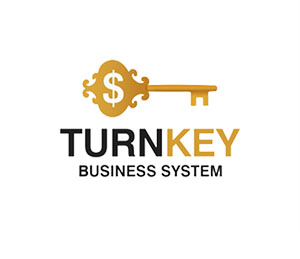12 Terms Every Crypto Trader Must Know

12 Terms Every Crypto Trader Must Know
The world of cryptocurrency trading is filled with unique terminology that reflects the culture, technology, and financial dynamics of this rapidly evolving space.
Whether you're a seasoned trader or just starting your journey into the crypto ecosystem, understanding these terms is essential for navigating the market effectively.
In this article, we’ll break down 12 key terms that every crypto trader should know—from emotional triggers like FOMO to regulatory frameworks like AML and KYC.
Whether you're a seasoned trader or just starting your journey into the crypto ecosystem, understanding these terms is essential for navigating the market effectively.
In this article, we’ll break down 12 key terms that every crypto trader should know—from emotional triggers like FOMO to regulatory frameworks like AML and KYC.

12 Terms Every Crypto Trader Must Know
1. Fear, Uncertainty, and Doubt (FUD)
FUD stands for "Fear, Uncertainty, and Doubt" and refers to the spread of negative information—whether true or false—to create panic in the market. This tactic is often used by individuals or groups to manipulate asset prices for their benefit. For example, spreading rumors about a blockchain project's failure could cause investors to sell off their holdings, driving the price down and allowing opportunistic traders to buy at a discount.Understanding FUD helps traders avoid making impulsive decisions based on misinformation. Instead of reacting emotionally, it’s crucial to verify claims through reliable sources and maintain a long-term perspective.
2. Fear of Missing Out (FOMO)
FOMO , or "Fear of Missing Out," describes the anxiety-driven impulse to jump into trades because others seem to be profiting. This emotion is particularly prevalent during bull markets when prices surge rapidly. Traders experiencing FOMO may make purchases in haste without proper analysis, leading to poor investment choices.To combat FOMO, stick to your trading plan and remember that successful trading requires patience and discipline. Avoid chasing quick gains and focus on strategies backed by research and data.
3. HODL
"HODL" originated from a humorous misspelling of the word “hold” in a Bitcoin forum post back in 2013. It has since become synonymous with a buy-and-hold strategy, where investors purchase an asset and hold onto it regardless of short-term volatility. The philosophy behind HODLing is simple: believe in the long-term potential of the asset rather than reacting to temporary fluctuations.This approach works best for projects with strong fundamentals and widespread adoption. However, always ensure that the assets you choose to HODL align with your risk tolerance and investment goals.
4. BUIDL
Similar to HODL, BUIDL emphasizes building value within the crypto ecosystem. While HODL focuses on holding assets, BUIDL encourages participants to contribute actively to the development of blockchain technology and decentralized finance (DeFi). Whether it’s coding, marketing, or educating others, BUIDLers play a vital role in shaping the future of finance.In times of market downturns, the mantra "Keep calm and BUIDL on" reminds enthusiasts to stay focused on innovation rather than getting discouraged by price swings.
5. SAFU (Secure Asset Fund for Users)
SAFU stands for "Secure Asset Fund for Users," a term popularized by the exchange Binance. It represents a reserve fund designed to protect users’ funds in case of security breaches or unforeseen events. Exchanges that prioritize SAFU demonstrate a commitment to safeguarding customer assets, which builds trust among traders.When choosing a platform, look for those with robust security measures and transparent policies regarding user protection. After all, keeping your funds safe is paramount in the volatile world of crypto.
6. Return on Investment (ROI)
ROI , or "Return on Investment," measures how much profit or loss you’ve made relative to the amount invested. It’s calculated using the formula:ROI=(Initial Investment Current Value−Initial Investment)×100
For example, if you invested 1,000inacryptocurrencyanditsvalueincreasedto1,500, your ROI would be 50%. Conversely, if the value dropped to $800, your ROI would be -20%.
Understanding ROI helps traders evaluate the performance of their investments and compare different opportunities. Always consider both potential rewards and risks before committing capital.
7. All-Time High (ATH)
An ATH , or "All-Time High," refers to the highest price ever recorded for a particular cryptocurrency. Reaching an ATH is often celebrated as a milestone but can also trigger volatility as some investors take profits.While ATHs generate excitement, they shouldn’t be the sole indicator of a coin’s value. Analyze factors like project fundamentals, adoption rates, and market sentiment to assess whether an ATH is sustainable or merely speculative.
8. All-Time Low (ATL)
Conversely, an ATL , or "All-Time Low," marks the lowest price ever recorded for a cryptocurrency. ATLs typically occur during bear markets or periods of declining investor confidence.While seeing an asset at its ATL might tempt you to sell, it’s important to analyze the reasons behind the drop. Sometimes, ATLs present buying opportunities for undervalued assets, provided there’s evidence of long-term viability.
9. Do Your Own Research (DYOR)
The phrase DYOR , or "Do Your Own Research," is a cornerstone of responsible investing in crypto. Given the abundance of misinformation and scams in the industry, blindly trusting advice from influencers or anonymous sources can lead to costly mistakes.Before investing, thoroughly investigate the project’s whitepaper, team members, partnerships, tokenomics, and community feedback. DYOR empowers you to make informed decisions and reduces reliance on hearsay.
10. Due Diligence (DD)
Due Diligence (DD) goes hand-in-hand with DYOR. It involves conducting a systematic evaluation of a project’s credibility and potential. Smart investors base their decisions on facts rather than emotions, ensuring they understand the risks involved.Key aspects of DD include:
Reviewing audits of smart contracts.
Assessing the project’s roadmap and progress.
Verifying the legitimacy of the founding team.
By practicing DD, you minimize exposure to fraudulent schemes and maximize your chances of success.
11. Anti-Money Laundering (AML)
AML , or "Anti-Money Laundering," encompasses regulations and procedures aimed at preventing criminals from disguising illegally obtained funds as legitimate income. Cryptocurrencies have faced scrutiny due to their pseudonymous nature, which can attract illicit activities.Reputable exchanges implement AML protocols such as transaction monitoring and reporting suspicious activities. As a trader, familiarize yourself with AML laws in your jurisdiction to ensure compliance and avoid legal issues.
12. Know Your Customer (KYC)
KYC , or "Know Your Customer," requires exchanges and financial institutions to verify the identities of their users. This process usually involves submitting identification documents, proof of address, and sometimes even selfies.While some view KYC as invasive, it plays a critical role in enhancing security and combating fraud. Additionally, KYC-compliant platforms are more likely to gain regulatory approval, offering greater peace of mind to users.
Conclusion: Empower Yourself with Knowledge
Navigating the cryptocurrency market requires not only technical skills but also fluency in its distinctive vocabulary. By mastering these 12 terms—ranging from emotional pitfalls like FUD and FOMO to practical safeguards like AML and KYC—you’ll be better equipped to make informed decisions and thrive in this dynamic field.
Remember, the crypto space is still relatively young and constantly evolving. Stay curious, stay vigilant, and never stop learning. With the right mindset and knowledge, you can confidently participate in shaping the future of decentralized finance.
#CryptoTrading #Blockchain #InvestmentTips
Navigating the cryptocurrency market requires not only technical skills but also fluency in its distinctive vocabulary. By mastering these 12 terms—ranging from emotional pitfalls like FUD and FOMO to practical safeguards like AML and KYC—you’ll be better equipped to make informed decisions and thrive in this dynamic field.
Remember, the crypto space is still relatively young and constantly evolving. Stay curious, stay vigilant, and never stop learning. With the right mindset and knowledge, you can confidently participate in shaping the future of decentralized finance.
#CryptoTrading #Blockchain #InvestmentTips














Report
My comments